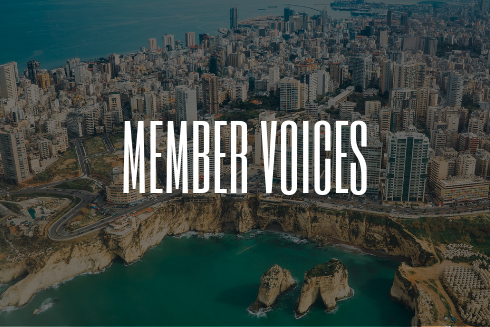Danielle Schroeder, EIT, A.M.ASCE, is an associate bridge engineer in Pennoni’s transportation division, based in its Philadelphia headquarters.
Though just three years into her career, she’s already been extraordinarily active in ASCE, most recently serving locally as the K-12 outreach co-chair for the Philadelphia Younger Member Forum, as well as in Society-level posts on the Structural Engineering Institute’s Structures Congresses Committee and as a corresponding member of the Members of Society Advancing an Inclusive Culture (MOSAIC) committee.
In today’s Member Voice, appropriate for June’s celebration as Pride Month, Danielle writes about why sharing her personal pronouns promotes respectful civil engineering communication and a safer work environment for everyone.

“Hi, my name is Dani Schroeder and my pronouns are she/her.”
For the last year or so, this is how I have been introducing myself when I am meeting new people. When I attended ERYMC 2020 earlier this year, I added my pronouns to my name tag. While some may not understand why I do this, this small action is one way to be an ally to support people with gender expansive identities. As a cisgender person (my gender identity is in alignment with the sex I was assigned at birth) I have never questioned the pronouns that people use for me. By stating my pronouns, I communicate that a person’s identity is very important, while also making this practice a social norm.
Canon 8 of the ASCE Code of Ethics states, “Engineers shall, in all matters related to their profession, treat all persons fairly and encourage equitable participation without regard to gender or gender identity, race, national origin, ethnicity, religion, age, sexual orientation, disability, political affiliation, or family, marital or economic status.”
But that doesn’t mean we are all treated equally by society. Until June 15th of this year, there was no federal law in United States that provided workplace protection for people who are LGBTQ+. According to the 2015 U.S. Transgender Survey, of the 21,715 trans and gender nonconforming people surveyed, 30 percent of respondents who had a job in the past year reported mistreatment (being fired, denied a promotion, or experiencing some other form of mistreatment related to their gender identity or expression). In this same survey, nearly one-third (32 percent) of respondents limited the amount that they ate and drank to avoid using a public restroom in the past year.

Although this information about gender identity is U.S.-centric, there are many cultures around the world that have understood and accepted the concept of a third gender, including Māhū in Hawaii and Tahiti as well as Fa’afafine in Samoa. As the civil engineering profession is a profession about people, sharing my pronouns is one way that I help to support a safer environment for the people I interact with daily, especially in the workplace.
We all have the power to create and advocate for change. In terms of pronouns, here are some general best practices that I have incorporated:
• Introduce yourself as “Hi, my name is XX and my pronouns are XX. What pronouns would you like me to use for you?” This introduction may not be natural to you at first but, similar to public speaking, the more you do it, the more natural and easier it becomes.
• If you do misgender someone, just a brief “sorry” to acknowledge the mistake and correct the pronoun use is sufficient.
• When you do not know what pronouns that person goes by, it is common to use “they/them” until you are able to ask.
• Be mindful of word choices. For example, when addressing a group of people, use gender neutral language such as “everyone,” “folks,” or “y’all” instead of “ladies and gentlemen” or “guys.”
• Consider using expansive honorifics – using “Mx.” Instead of Mr./Ms./Mrs. or leaving it out altogether if possible.
• Add your pronouns to your digital profiles (and perhaps your email signature). This is another way to inform people of your pronouns while also contributing to an inclusive environment.
This is not an exhaustive list, so please continue to stay open to hearing from your friends and colleagues about gender and their experiences. We are all people, let us do our part to be more supportive of the LGBTQ+ community.
**P.S.: When editing your LinkedIn profile on your computer, you cannot use the character “/”. However, you can use “/” when editing your last name on the LinkedIn app on your phone.


Thank you for sharing this. Important message and very well said!
Hi Katherine – thank you for the kind words! If you or anyone have any follow up questions about the article, don’t hesitate to reach out as I welcome the discussion!
Contributing your diverse perspective in addition to advocacy for and demonstration of allyship is deeply and profoundly appreciated Danielle!
Thank you, Dr. Black, for your kind words!